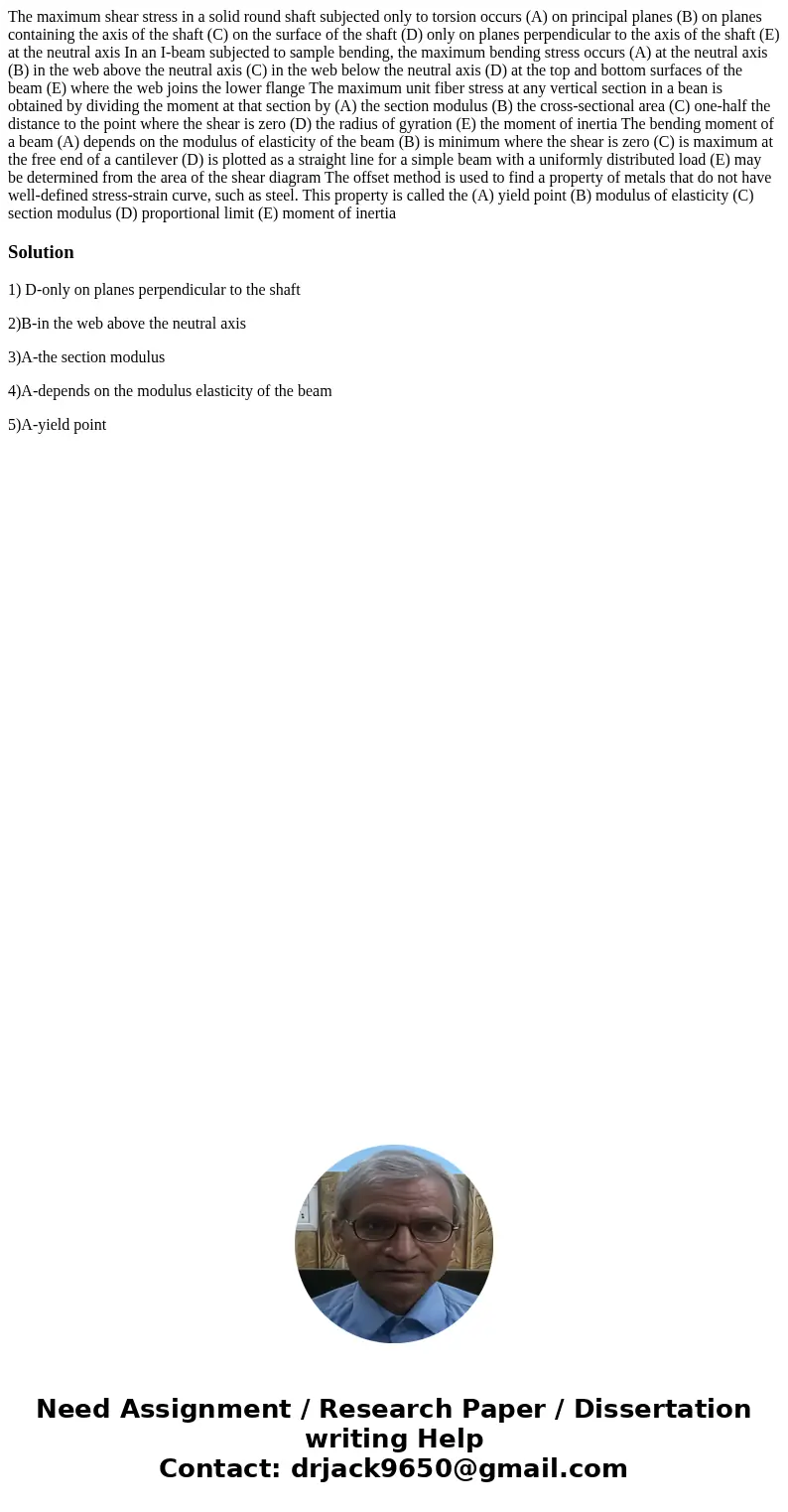The maximum shear stress in a solid round shaft subjected on
The maximum shear stress in a solid round shaft subjected only to torsion occurs (A) on principal planes (B) on planes containing the axis of the shaft (C) on the surface of the shaft (D) only on planes perpendicular to the axis of the shaft (E) at the neutral axis In an I-beam subjected to sample bending, the maximum bending stress occurs (A) at the neutral axis (B) in the web above the neutral axis (C) in the web below the neutral axis (D) at the top and bottom surfaces of the beam (E) where the web joins the lower flange The maximum unit fiber stress at any vertical section in a bean is obtained by dividing the moment at that section by (A) the section modulus (B) the cross-sectional area (C) one-half the distance to the point where the shear is zero (D) the radius of gyration (E) the moment of inertia The bending moment of a beam (A) depends on the modulus of elasticity of the beam (B) is minimum where the shear is zero (C) is maximum at the free end of a cantilever (D) is plotted as a straight line for a simple beam with a uniformly distributed load (E) may be determined from the area of the shear diagram The offset method is used to find a property of metals that do not have well-defined stress-strain curve, such as steel. This property is called the (A) yield point (B) modulus of elasticity (C) section modulus (D) proportional limit (E) moment of inertia
Solution
1) D-only on planes perpendicular to the shaft
2)B-in the web above the neutral axis
3)A-the section modulus
4)A-depends on the modulus elasticity of the beam
5)A-yield point

 Homework Sourse
Homework Sourse